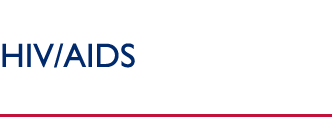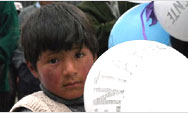Bangladesh
With less than 0.1 percent of the population
estimated to be HIV-positive, Bangladesh is a
low HIV-prevalence country. The country faces
a concentrated epidemic, and its very low HIV-prevalence
rate is partly due to prevention efforts,
focusing on men who have sex with men (MSM),
female sex workers (FSWs), and injecting drug
users (IDUs). Four years before the disease’s
1989 appearance in the country, the government
implemented numerous prevention efforts
targeting the above high-risk populations as well as
migrant workers. Although these activities have
helped keep the incidence of HIV down, the
number of HIV-positive individuals has increased
steadily since 1994 to approximately 7,500
people in 2005 according to the International
Center for Diarrhoeal Disease Research,
Bangladesh. UNAIDS estimates the number
to be slightly higher at 11,000 people.
USAID supports outreach to most-at-risk populations and media campaigns informing the public about HIV/AIDS transmission, risk-reduction behavior, stigma reduction, condom use, and the importance of testing and treatment; tracks the spread of HIV and generates data to guide Bangladesh’s response to the virus; and distributes therapy kits for sexually transmitted infections (STIs).
View the USAID HIV/AIDS Health Profile for Bangladesh - March 2008 [PDF,
130KB]
Related Links
|


